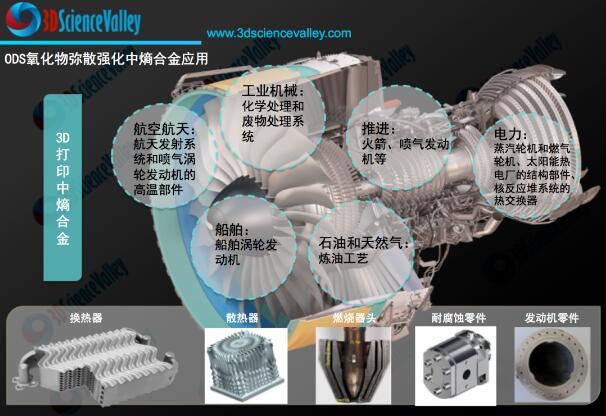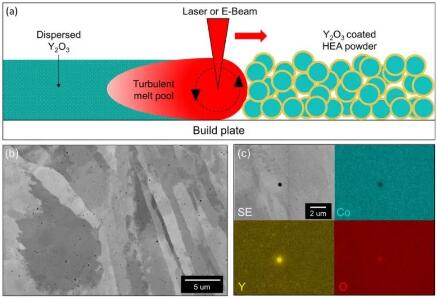with metal3D printingMore and more attention has been paid to printable metal alloy materials, and breakthroughs in the field of research and development are also being continuously obtained. The components of chemical plants, oil wells and gas well extraction equipment are usually exposed to strong corrosive gases. In order to ensure the safety of operation, these components are required to have high strength and corrosion resistance, and high entropy alloys play an important role in it. Role.
Conventional medium/high-entropy alloys are produced by casting, however, composition deviation is prone to occur during casting. And the hardness is very high, and it is difficult to carry out later mechanical processing.3D printingIt provides a winding solution in the preparation of medium/high entropy alloys. To 3D print alloys tailored for high temperature applications, NASA has developed entropy alloys in oxide dispersion strengthened media (LEW-TOPS-151)
Corrosion and high temperature resistance
According to 3D Science Valley, numerous leading technologies in power generation and transportation today and in the future depend on the safe and efficient use of high temperature materials. Until now, the materials used for components that operate in harsh environments have been very expensive and difficult to machine. 3D printing-additive manufacturing offers new material design strategies and processing possibilities that help overcome the disadvantages of these materials being difficult to process. Oxide dispersion strengthened alloys (ODS) allow operation under extreme erosion, high temperature corrosion and thermal fatigue loading conditions.
 Application of Entropy Alloy in ODS Oxide Dispersion Strengthening
Application of Entropy Alloy in ODS Oxide Dispersion Strengthening
© 3D Science Valley White Paper
![]() Stable performance at extreme temperatures
Stable performance at extreme temperatures
Innovators at NASA’s Glenn Research Center have developed a new oxide dispersion-strengthened medium-entropy alloy (ODS-MEA) tailored for additive manufacturing (AM) technology. The nanoscale ceramic particles of this ODS alloy are distributed in the metal.
According to 3D Science Valley, this alloy was originally developed to improve mechanical properties (eg, creep resistance, tensile strength, microstructural integrity) at extreme temperatures. The alloy shows promise in metal components for gas turbines, rocket engines, nuclear reactors and other high-temperature applications. However, traditional mechanical alloying processes to produce such alloys are extremely inefficient, time-consuming and costly, and 3D printing opens up a shortcut to achieve such alloys.
NASA’s ODS-MEA material by selective laser melting of L-PBFMetal 3D Printingtechnology to process. The alloy can be fabricated into complex geometries and is resistant to stress cracking and dendritic segregation.
 (a) Schematic showing the incorporation of nanoscale yttrium oxide particles into AM additively manufactured parts using novel oxide-coated powder feedstocks; (b) SEM micrograph showing oxide dispersion in AM components; (c) The chemical map confirms that the dark particles shown in (b) are nanoscale yttrium oxide dispersions.
(a) Schematic showing the incorporation of nanoscale yttrium oxide particles into AM additively manufactured parts using novel oxide-coated powder feedstocks; (b) SEM micrograph showing oxide dispersion in AM components; (c) The chemical map confirms that the dark particles shown in (b) are nanoscale yttrium oxide dispersions.
(responsible editor: admin)



0 Comments for “Through the oxide dispersion strengthened medium entropy alloy developed by NASA, see the development of 3D printing superalloy”